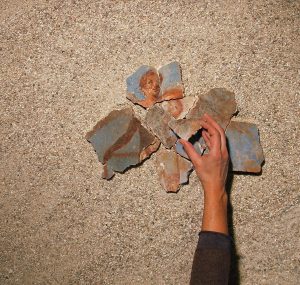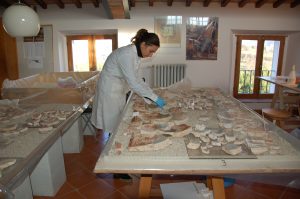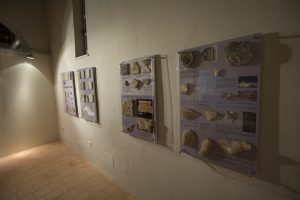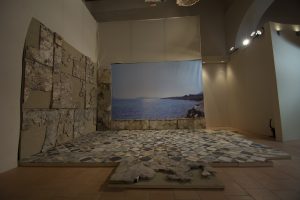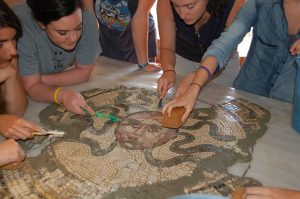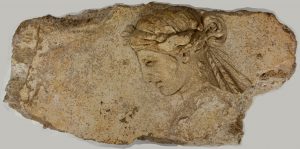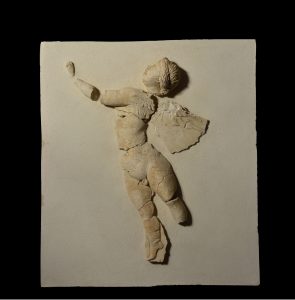Museum display and communication activities
Methodological choices adopted in restoring materials from the Roman Villa in Sant’Imbenia were guided since the very beginning by the project’s end goal: the materials’ presentation and display in Civic Archaeological Museum of Alghero, Museo della Città.
The opus sectile floor was reassembled on aluminium honeycomb panels (aerolam). Two panels that had been found intact in the collapse and documented during excavation suggested the elements’ order. The arrangement of the 49 recomposed panels for display was functional to the dimensions of the museum space. The exact dimensions of the original room within the villa remain unknown, as they are not indicated by available archaeological data.
Marble slabs pertaining to the wall veneer were restored through a lengthy operation that involved the search for joins among fragments contained in 62 crates and the subsequent adhering of the recomposed fragments.
Painted plasters have been reassembled during restoration in two small domes and two panels, one rectangular and one rhomboidal. Imprints of small wooden beams and wattle on the rear of the plaster fragments made it possible to ascribe these elements to the ceiling of the upper floor and to identify the panels’ orientation.
Similarly to the opus sectile and wall cladding, the reconstructed domes and panels are the result of a lengthy process of searching for joins, adhering fragments and positioning them on a mobile support.
As for the other materials, the choice was made to install the four painted plaster elements in a position that would recall their original function as part of a ceiling. They were therefore hung with steel cables to the ceiling of the museum room, above the opus sectile pavement and the marble cladded wall.
The stuccoes were displayed in a room adjacent to the one in which the opus sectile, wall cladding and painted ceiling are exhibited. In fact, the stuccoes come from a different space in the villa and their original location within the room was not identified. Thus, we chose to display them singularly, in panels, without attempting to reproduce an order of which we know nothing.
The Medusa mosaic, together with a number of didactic panels on the decorations’ execution techniques and on the types of marbles used in the villa complete the display in the Museo della Città of Alghero.
Furthermore, as integral component of the Cultural Project, CCA realized postcards displaying the main elements of the intervention, stuccoes, domes and frescoes, opus sectile and the whole room, as well as flyers and a poster for distribution within the museum. A twenty minutes video following the intervention phases was produced, as well as a publication with the details of the conservation project.
In conclusion, working towards a Cultural Project allows to transform a technical, short term operation such as restoration into a cultural process that looks at the long term, restoring historical significance to the message that reaches us from antiquity for the benefit of the public.













